CCR8
-
Official Full Name
chemokine (C-C motif) receptor 8 -
Overview
CCR8 (C-C chemokine receptor 8, CKR-L1, cy6) is a member of the beta-chemokine receptor family that is preferentially expressed in the thymus. Chemokines and their receptors are important for the migration of various cell types into the inflammatory sites -
Synonyms
CCR8;chemokine (C-C motif) receptor 8;CMKBR8, CMKBRL2;C-C chemokine receptor type 8;CDw198;CKR L1;CY6;GPR CY6;TER1;CC chemokine receptor 8;chemokine receptor-like 1;chemokine (C-C) receptor 8;CC chemokine receptor CHEMR1;CC-chemokine receptor
Recombinant Proteins
- Mouse
- Cynomolgus
- Human
- Chicken
- Rhesus macaque
- Macaca mulatta
- E.coli
- C-mFc
- C-hFc
- HEK293
- Wheat Germ
- Mammalian Cells
- In Vitro Cell Free System
- His
- Non
- GST
- Fc
- mFc
- Avi
- Flag
- Twin Strep
- SUMO
Background
What is CCR8 protein?
CCR8 gene (C-C motif chemokine receptor 8) is a protein coding gene which situated on the short arm of chromosome 3 at locus 3p22. This gene encodes a member of the beta chemokine receptor family, which is predicted to be a seven transmembrane protein similar to G protein-coupled receptors. Chemokines and their receptors are important for the migration of various cell types into the inflammatory sites. This receptor protein preferentially expresses in the thymus. I-309, thymus activation-regulated cytokine (TARC) and macrophage inflammatory protein-1 beta (MIP-1 beta) have been identified as ligands of this receptor. The CCR8 protein is consisted of 355 amino acids and CCR8 molecular weight is approximately 40.8 kDa.
What is the function of CCR8 protein?
The CCR8 protein is a G-protein-coupled receptor that is primarily expressed on specific immune cells, including regulatory T cells (Tregs). Binding of CCR8 to its ligand CCL1 regulates the migration and function of Tregs in the tumor microenvironment, and these Tregs contribute to tumor immune escape, so CCR8 is an important target in tumor immunotherapy. By blocking CCR8, the accumulation of Tregs in the tumor microenvironment can be reduced, potentially enhancing the anti-tumor immune response. In addition, CCR8 expression in the tumor microenvironment has been linked to immunosuppression and tumor progression in a variety of cancers, making it a potential cancer therapeutic target.
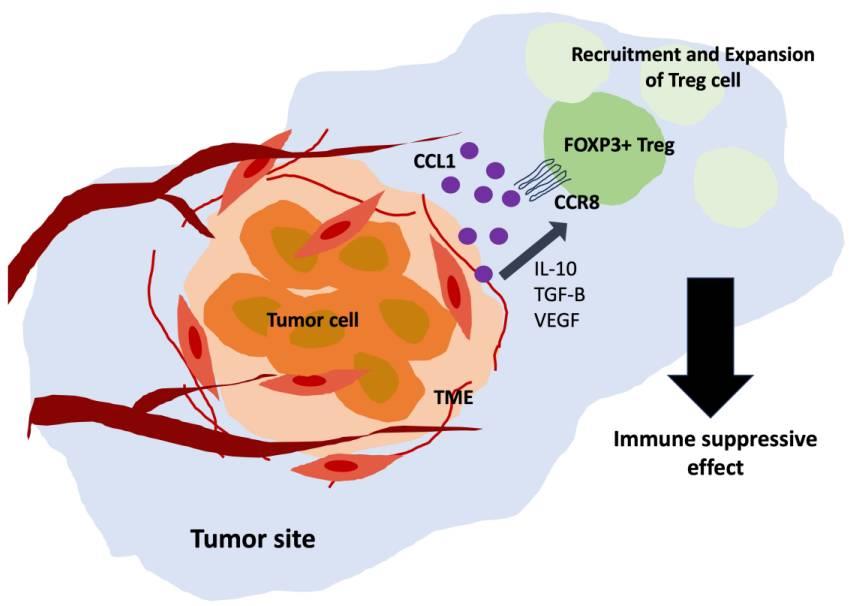
Fig1. Role of CCR8 in the recruitment and expansion of tumor-infiltrating regulatory T cell (Treg) into the tumor microenvironment (TME). (Nari Kim, 2023)
CCR8 related signaling pathway
The CCR8-related signaling pathway refers to a series of molecular and intracellular events associated with CCR8 that work synergistically in the intracellular and external environment to regulate the biological function of cells. CCR8 is mainly expressed in immune cells, such as T cells and dendritic cells. By binding to its ligands (such as CCL1, CCL3, CCL5, etc.), CCR8 activates downstream signaling pathways, such as G protein-coupled receptor (GPCR) signaling pathway and PI3K/AKT signaling pathway, thereby regulating biological processes such as cell migration, proliferation, differentiation and apoptosis. Participate in immune response, inflammation and other physiological and pathological processes.
CCR8 related diseases
Ccr8-related diseases refer to a series of diseases associated with CCR8, including autoimmune diseases, tumors, and infectious diseases. CCR8 plays an important role in the migration and activation of immune cells, so its abnormal expression or dysfunction can lead to an abnormal response of the immune system, which in turn can trigger autoimmune diseases. In addition, CCR8 is also involved in the invasion and metastasis of tumor cells, so its abnormal expression or dysfunction may also lead to the occurrence and development of tumors. In addition, CCR8 is also involved in the immune response to infectious diseases, and its abnormal expression or dysfunction may affect the body's ability to clear pathogens.
Bioapplications of CCR8
The biological applications of rhCCR8 are mainly focused on the research and treatment of immune-related diseases and oncology. As an important immunomodulatory molecule, rhCCR8 can be used in vitro experiments to investigate its mechanism of action in immune cell migration, inflammatory response, and autoimmune disease. In addition, rhCCR8 has the potential to be a biological target for tumor therapy, as it is overexpressed in certain types of cancer, such as breast cancer and melanoma, and may be associated with tumor cell migration and invasion. By targeting rhCCR8, new therapeutic strategies can be developed to block tumor progression.
Case Study
Case Study 1: Libao Liu, 2024
Human CC chemokine receptor 8 (CCR8), found on tumor-infiltrating regulatory T cells (TITRs), is a potential target for cancer immunotherapy, but its role in TITR function and the efficacy of CCR8 antagonists are still debated. Researchers developed a TITR mimic model by culturing regulatory T cells with tumor cell-conditioned medium and other activators, which stably expressed TITR markers including CCR8. These mimics showed strong immunosuppressive activity in vitro. Despite CCR8's role in chemotaxis towards CCL1, neither CCL1 stimulation nor CCR8 blockade with NS-15 affected the immunosuppressive function, proliferation, or survival of the TITR mimics.
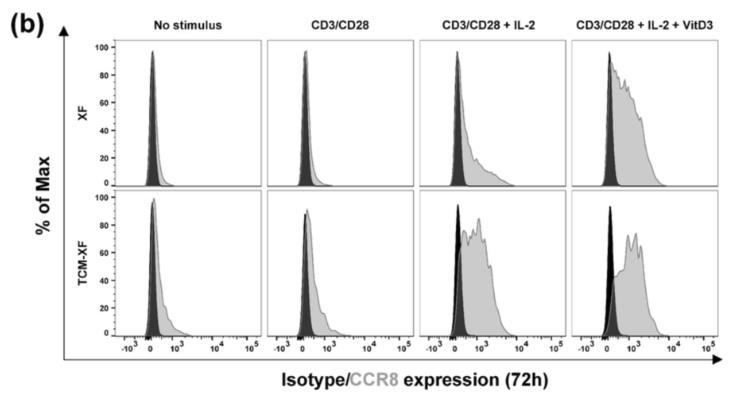
Fig1. CCR8 expression in Tregs after 72 h of culture.
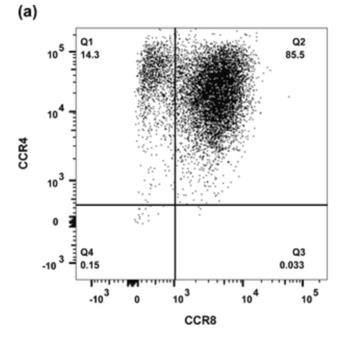
Fig2. Representative flow cytometry dot plot showing CCR8 and CCR4 expression on TITRs mimics.
Case Study 2: Khansa Hussain, 2024
CCL18, a chemokine specific to primates, attracts T cells and is overexpressed in inflammatory diseases, but its receptor is unidentified. They tested the hypothesis that CCR8 is the receptor for human CCL18, but found no evidence supporting this. Mouse pre-B cell lines with CCR8 showed migration in response to CCL1, not CCL18, and CCL1 induced CCR8 internalization, unlike CCL18. CCR8 on CHO cells also responded to CCL1 but not CCL18 in terms of G protein activation, cAMP inhibition, and β-arrestin2 recruitment. Variants of CCL18 did not activate CCR8, yet CCL18 did inhibit CCL11-induced migration in CCR3-expressing cells, as previously reported.
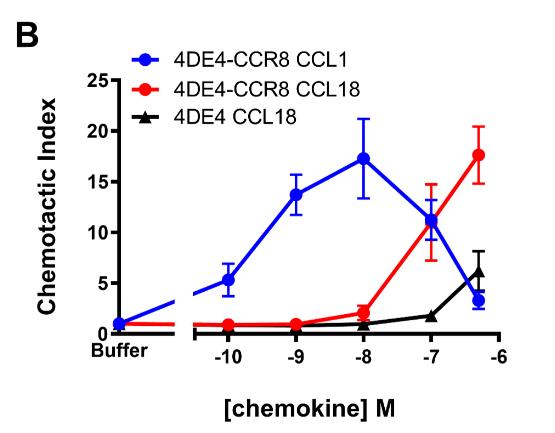
Fig3. Comparative chemotaxis responses of the same 4DE4-CCR8 line to CCL1 (blue) and CCL18 (red).
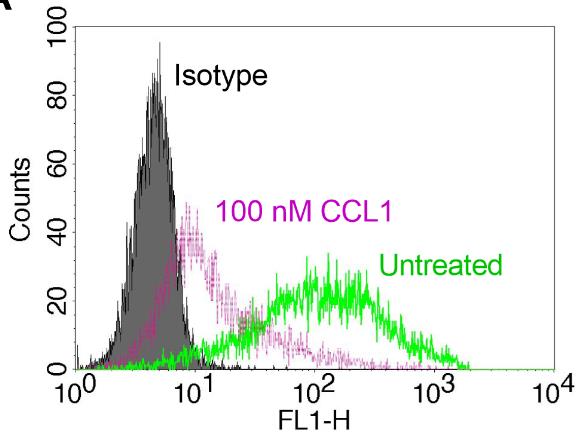
Fig4. Representative cell surface levels of CCR8 on the 4DE4-CCR8 stable cell line.
Quality Guarantee
Involved Pathway
CCR8 involved in several pathways and played different roles in them. We selected most pathways CCR8 participated on our site, such as Chemokine receptors bind chemokines,Chemokine signaling pathway,Class A/1 (Rhodopsin-like receptors), which may be useful for your reference. Also, other proteins which involved in the same pathway with CCR8 were listed below. Creative BioMart supplied nearly all the proteins listed, you can search them on our site.
| Pathway Name | Pathway Related Protein |
|---|---|
| GPCRs, Class A Rhodopsin-like | CHRM4,APLNR,GPR63,GPR85,CCRL2,CCBP2,GPR68,AGTR2,OR3A4P,OPN3 |
| Class A/1 (Rhodopsin-like receptors) | CCR9,INSL5,PENKB,PROKR2,CX3CR1,NMS,PROKR1,SSTR5,CHRM4,GPR37B |
| Cytokine-cytokine receptor interaction | IFNA13,CXCL12A,TNFSF15,KITLGB,GDF5,Ccl9,VEGFC,IL1R2,TNFRSF21,CRFB4 |
| G alpha (i) signalling events | RLN3,HEBP1,RGS6,CXCR6,ANXA1A,ADORA3,PNOCB,PPY,OPN1SW,DRD2 |
| Chemokine signaling pathway | MAPK1,CCL21B,GNAI1,GNG13,FOXO3,RAP1A,CCL26,WAS,GNG8,PIK3CD |
| GPCR ligand binding | CX3CR1,CCR9,OPN5,SSTR4,S1PR5B,GHRH,ADM2,TAAR1,INSL5,FPR-RS3 |
| Chemokine receptors bind chemokines | CCL35.2,CCRL2,CXCL11.8,CCR9,CCL19A.2,CCL27,CXCR7B,CCL35.1,CCBP2,ACKR4 |
| GPCR downstream signaling | FGD4A,HEBP1,GPR68,RGS6,PTHLHA,TAC2,RLN2,S1PR3,OR2AP1,ADORA3 |
Protein Function
CCR8 has several biochemical functions, for example, C-C chemokine receptor activity,chemokine receptor activity,coreceptor activity. Some of the functions are cooperated with other proteins, some of the functions could acted by CCR8 itself. We selected most functions CCR8 had, and list some proteins which have the same functions with CCR8. You can find most of the proteins on our site.
| Function | Related Protein |
|---|---|
| C-C chemokine receptor activity | CCR7,CCR6,CCR10,CCBP2,CCR5,CCR3,CCR1,GPR75,CCR1L1,CCR6A |
| coreceptor activity | IGSF1,RGMB,CD86,CD28,CD4,RAMP2,HFE2,PVRL2,TMIGD2,CXCR7 |
| chemokine receptor activity | CCR12A,ACKR4,CCR9A,CXCR4B,RGRB,CCRL2,CXCR3,CXCR3.2,CXCR4A,CCR5 |
Interacting Protein
CCR8 has direct interactions with proteins and molecules. Those interactions were detected by several methods such as yeast two hybrid, co-IP, pull-down and so on. We selected proteins and molecules interacted with CCR8 here. Most of them are supplied by our site. Hope this information will be useful for your research of CCR8.
Resources
Gene Families
Research Area
Related Services
Related Products
References
- Santos-Costa, Q; Lopes, MM; et al. HIV-2 interaction with cell coreceptors: amino acids within the V1/V2 region of viral envelope are determinant for CCR8, CCR5 and CXCR4 usage. RETROVIROLOGY 11:-(2014).
- Zhou, JH; Kang, N; et al. Anti-gamma delta TCR antibody-expanded gamma delta T cells: a better choice for the adoptive immunotherapy of lymphoid malignancies. CELLULAR & MOLECULAR IMMUNOLOGY 9:34-44(2012).


.jpg)
.jpg)

